Length 11 m Wingspan 11 m Cruise speed 250 km/h | Top speed 289 km/h Range 662 km | |
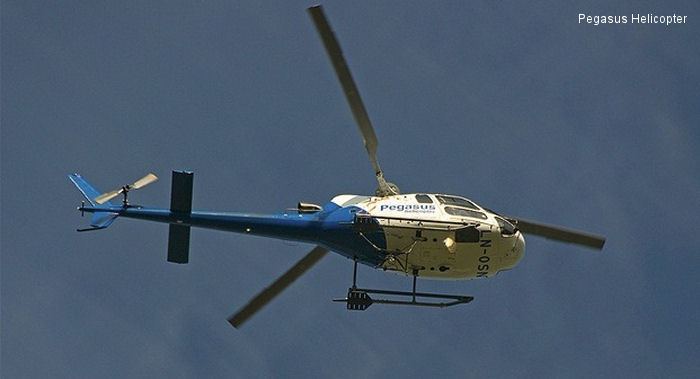 | ||
Manufacturers Airbus Helicopters, Helibras, Aérospatiale | ||
Helicopter eurocopter as350 ecureuil
The Eurocopter AS350 Écureuil (Squirrel) is a single-engine light helicopter originally designed and manufactured in France by Aérospatiale (now Airbus Helicopters). In North America, the AS350 is marketed as the AStar. The AS355 Ecureuil 2 is a twin-engine variant, marketed in North America as the TwinStar. The Eurocopter EC130 is a derivative of the AS350 airframe and is considered by the manufacturer to be part of the Écureuil single-engine family.
Contents
- Helicopter eurocopter as350 ecureuil
- Eurocopter as350 e cureuil
- Development
- Design
- Operational history
- Variants
- Aftermarket conversions
- Operators
- Military and government operators
- Notable accidents and incidents
- Specifications AS350 B3
- References
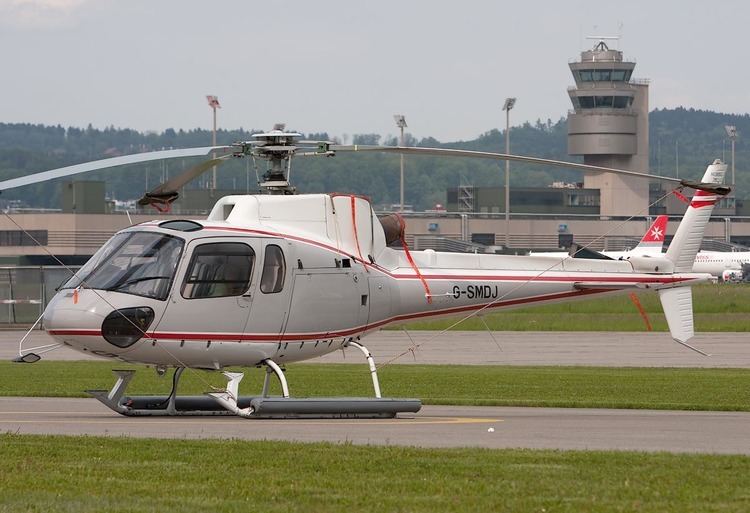
Eurocopter as350 e cureuil
Development
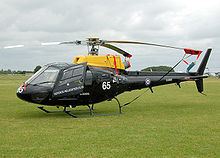
In the early 1970s, Aérospatiale decided to initiate a new development programme to produce a suitable replacement for the aging Aérospatiale Alouette II. While the Aérospatiale Gazelle, which had been developed in the 1960s and 1970s, had been met with numerous orders by military customers, commercial sales of the type had been less than anticipated, thus the need for a new civil-orientated development was identified.
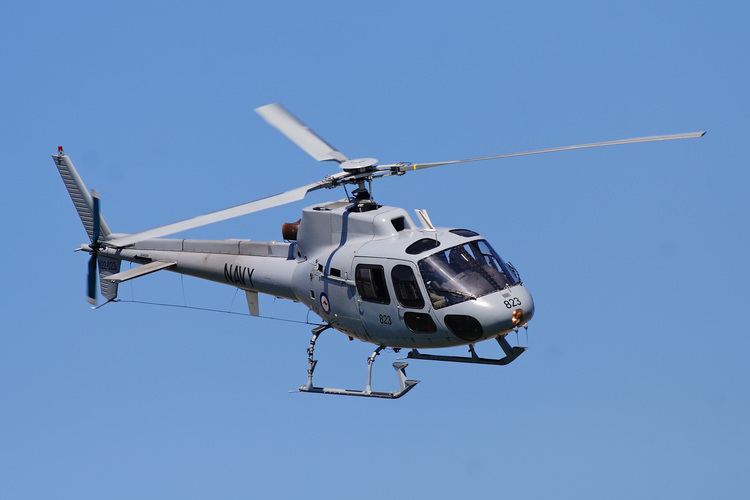
The development of the new rotorcraft, which was headed by Chief Engineer René Mouille, was focused on the production of an economic and cost-effective aerial vehicle, thus both Aérospatiale's Production and Procurement departments were heavily involved in the design process. One such measure was the use of a rolled sheet structure, a manufacturing technique adapted from the automotive industry; another innovation was the newly developed Starflex main rotor. It was also decided that both civil and military variants of the emergent helicopter would be developed to conform with established military requirements.
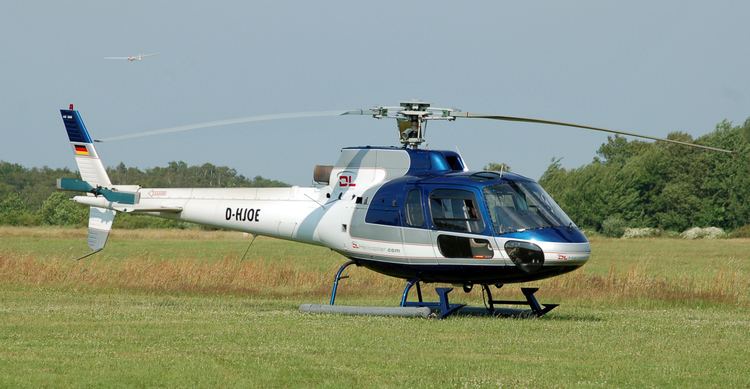
On 27 June 1974, the first prototype, an AS350 C powered by a Lycoming LTS101 turboshaft engine, conducted its maiden flight at Marignane, France; the second prototype, powered by a Turbomeca Arriel 1A, following on 14 February 1975. The Arriel-powered version, the AS350B, intended for sale throughout the world except for North America, was certified in France on 27 October 1977, while the Lycoming powered AS350C (or AStar) was certified by the US Federal Aviation Administration on 21 December 1977. In March 1978, deliveries to customers began for the AS350B, deliveries of the AS350C began in April 1978.
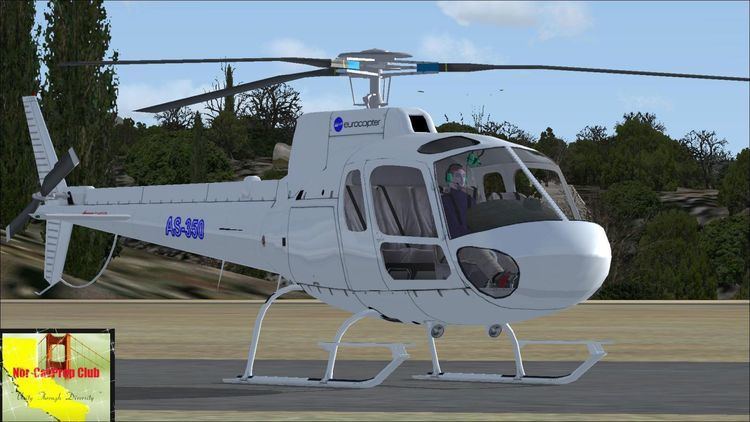
Over time, the AS350 Écureuil/AStar has received further development; while the aircraft's design remains broadly similar, various aspects and systems such as the rotor system, powerplants, and avionics have been progressively improved. On 6 February 1987, a prototype AS350 B2 flew with a fenestron tail-rotor in the place of its normal conventional counterpart. On 1 March 1997, the first AS350 B3, equipped with an Arriel 2B engine, performed its first flight. Various conversion programs and addons for AS350s have been produced and are offered by multiple third-party 'aftermarket' aerospace firms in addition to those available directly from the type's prime manufacturer. New variants of the Arriel-powered AS350B, the AS350 B1, AS350 B2, and AS350 B3, were progressively introduced; the later B3 differing from preceding models by the increasing use of digital systems, such as the Garmin-built G500H avionics suite and FADEC engine control system.
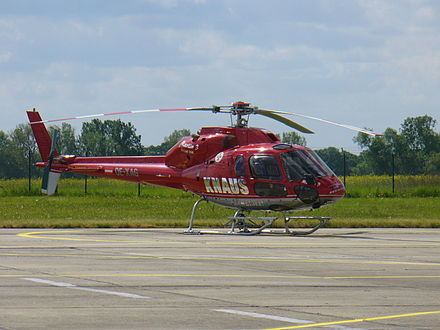
Prior to 2013, the type had been manufactured principally at Eurocopter's Marignane facility, near Marseille, France; Eurocopter opted to, as part of a move to disperse its helicopter production activities, begin AS350 production and final assembly activities at its factory in Columbus, Mississippi for deliveries to U.S. commercial helicopter market. The Astar has been Eurocopter's biggest-selling product in the US commercial market, at one point selling roughly one AS350 every business day. In March 2015, the first Columbus-assembled AS350 B3e received its FAA certification. In December 2015, Airbus Helicopters reported their intention to double the rate of AS350 production at Columbus in 2016 over the previous year, and that the facility is capable of producing up to 65 AS350s per year.
Design
The AS350 is a single engine helicopter, powered either by a Lycoming LTS101 or Turbomeca Arriel powerplant (for twin-engined variants, see Eurocopter AS355), that drives a three-blade main rotor, which is furnished with a Starflex rotor head. The type is well known for its high-altitude performance and has seen frequent use by operators in such environments. Both the main and tail rotors make use of composite material and are deliberately designed to minimize corrosion and maintenance requirements. The AS350 was also developed to comply with the stringent noise requirements in place in locations such as national parks; the in-cabin noise levels are such that passengers may also readily converse during flight. The aircraft can also be quickly started up and shut down, which is often useful during emergency medical services roles. It is equipped with hydraulically-assisted flight controls; these controls remain operational, albeit operated with greater physical difficulty, in the event of a hydraulic failure.
Much of the AS350's avionics are provided by Garmin, such as the GI 106A course-deviation indicator, GNS 430 VHF/VOR/localizer/glideslope indicator/Global Positioning System receiver, GTX 327 Mode A and C transponder, and GMA 340H intercom. The Vehicle and Engine Multifunction Display (VEMD) and the First Limit Indicator (FLI) both serve to increase the aircraft's safety during flight, reducing the number of gauges that need to be monitored by the pilot and thereby reducing their workload. For increased smoothness in flight, which positively affects passenger comfort as well as safety, stability augmentation systems can be installed. Later-production aircraft feature new avionics and systems such as the integration of an Automatic Flight Control System (AFCS) and autopilot, a glass cockpit featuring three liquid-crystal displays (LCDs) and digital avionics, such as the synthetic-vision terrain mapping system and Airbus's Multibloc center console upon which various radios may be mounted.
The AS350 has proven popular in a wide range of roles; as such, multiple cabin configurations can be used, between four and six passengers in a typical seating configuration, and large sliding doors can be fitted to either side of the cabin. In some operators' fleets, the furnishings of the cabin has been designed to enable the internal space and/or equipment fit-out to be rapidly reconfigured to enable aircraft to be switched between diverse operational roles. Public service operators, such as those in law enforcement, often have forward looking infrared (FLIR) cameras and other mission systems installed on their aircraft. Other optional equipment on offer to operates had included real-time data links, rescue hoists, underslung cargo hooks, electrical external mirrors, search lights, tactical consoles, night vision goggle-compatibility, moving-map system, internal cabin tie-downs, second battery kit, sand filters, wire strike protection system, 4-channel radio, tail rotor arch, cabin floor windows, and removable seats.
Modern aircraft have various refinements beyond those featuring on older models; these changes include dual-channel FADEC-equipped engines, increasing use of digital avionics in the cockpit, decreased maintenance costs, a re-designed cabin, and a comfortable Stylence interior (optional). Older aircraft often undergo refurbishment programs to install aftermarket features, or for the addition of functionality common to newer production aircraft, such as retrofitting of the glass cockpit.
Operational history
On 14 May 2005, an AS350 B3 piloted by Eurocopter test pilot Didier Delsalle touched down on the top of Mount Everest, at 8,848 m (29,030 ft). this record has been confirmed by the Fédération Aéronautique Internationale. On 29 April 2010, a stripped-down AS350 B3 rescued three Spanish alpinists, one at a time, from the slopes of Annapurna I, Nepal at an altitude of 6,900 m (22,640 ft); this set a new record for the highest such rescue. The record was increased to 7,800 m (25,590 ft), during the rescue of Sudarshan Gautam between Camps III & IV in Everest's Yellow Band on the morning of 20 May 2013. On 2 June 2014, an AS350 B3e broke a national record in Mexico by successfully landing on the peak of Pico de Orizaba, the nation's tallest mountain.
The AS350 AStar has been successful in the US market, having become the most popular helicopter platform in use with individual American governmental agencies, law enforcement being a typical use of the type, by 2015. By 1999, the AS350 had become the prime helicopter being used by the United States Customs Service for light enforcement operations; by 2007, the agency had become the single largest operator of the type in the world. By 2012, out of the 3,300 AS350s in operation across the world, 783 of them were in service with American-based operators.
In the Russian market since 2006, the AS350 and other helicopters built by the manufacturer have been sold and supported by wholly owned subsidiary Eurocopter Vostok; UTair Aviation soon emerged as the largest Russian operator of the AS350 B3e with a fleet of at least 20 of the type.
In December 2014, EASA validation was issued for Airbus Helicopters China to conduct training and support activity at their facility in Shenzhen, China; various components of the AS350 (such as the main and tail gearboxes) are now maintained locally. On 9 September 2015, China's first helicopter leasing company, CM International Financial Leasing Corp Ltd (CMIFL), placed an order for 100 Ecureuil-series helicopters, these are to be a mix of H125 and H130 helicopters.
Brazil has been an extensive operator of the AS350; by 2011 more than 300 helicopters were operating in the country in various conditions and roles, including from the flight deck of the Brazilian aircraft carrier São Paulo. Since 1984, the Brazilian Navy has used AS350s to support the Brazilian Antarctic Program. Helibras, a wholly owned subsidiary of Eurocopter, operates in the country; of the 600 helicopters it had domestically manufactured for the Brazilian market by 2012, 70% were AS350s. In January 2011, Helibras signed a contract with the Brazilian Army to substantially upgrade and refurbish their existing fleet of 36 AS350 Ecureuils.
In the United Kingdom, the Defence Helicopter Flying School has operated 26 AS350, designated Squirrel HT1, for the training of pilots of Britain's armed forces; the type was progressively introduced from 1997 onwards as a replacement for the Aérospatiale Gazelle. In September 2014, the UK's Ministry of Defence issued a request for proposals to replace the Squirrel HT1; Airbus Helicopters has already announced its intention to offer a mixed fleet of Eurocopter EC130s and Eurocopter EC135s in response. Since May 1984, the Royal Australian Navy's Fleet Air Arm has operated a fleet of AS350s, these were upgraded to the AS350 BA standard in 1995; the Royal Australian Air Force had previously operated the AS350 for training purposes, and briefly for search and rescue missions, but these were later transferred to the Australian Army.
Between June 2007 and December 2007, the Danish Air Force operated a deployment of four AS350 helicopters at Basra International Airport, Iraq, to perform liaison and reconnaissance missions in support of coalition forces during the Iraq War. In June 2015, the Argentine Defense Ministry ordered 12 H125s to replace their 1970s era Aérospatiale SA 315B Lamas for para-public support missions, such as search and rescue operations, inside Argentina.
Variants
Aftermarket conversions
Operators
The AS350 is in service around the world operated by private individuals, airline and charter operators, emergency medical teams, governments and law enforcement agencies.
Military and government operators
Notable accidents and incidents
Specifications (AS350 B3)
Data from Brassey's World Aircraft & Systems Directory 1999/2000
General characteristics
Performance
Avionics
Vehicle and Engine Monitoring Display (VEMD) with First Limit Indicator (FLI) fitted as standard.
† 4, 5, & 6 passengers options available. The 6 passenger configuration is a relatively uncommon high-density seating option that replaces one front seat with a two-person bench and relocates the pilot to the left side of the cockpit.
